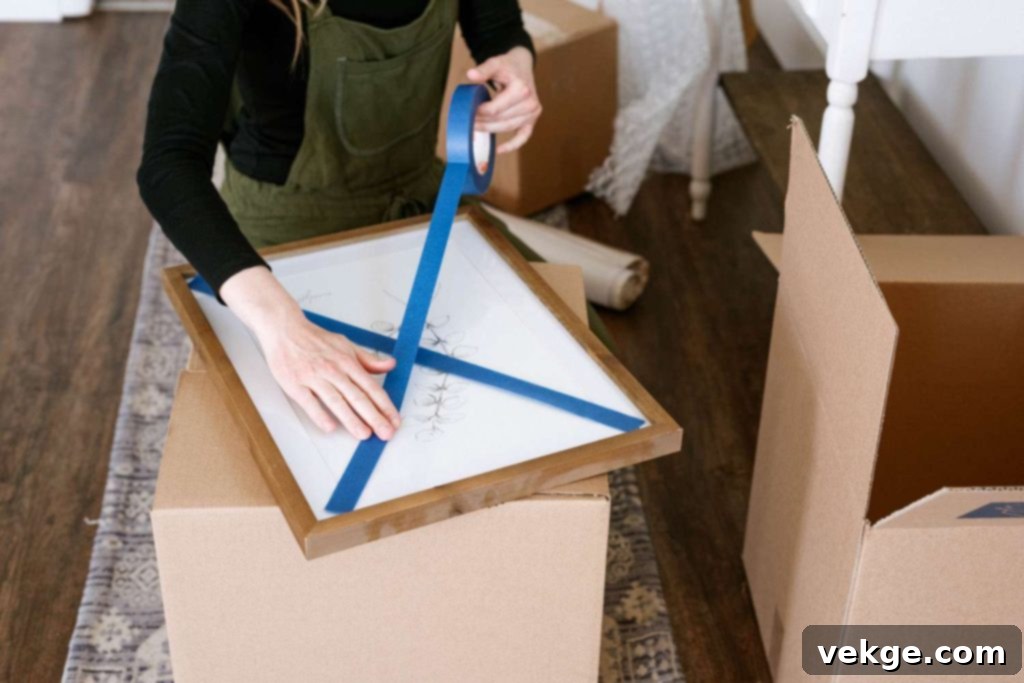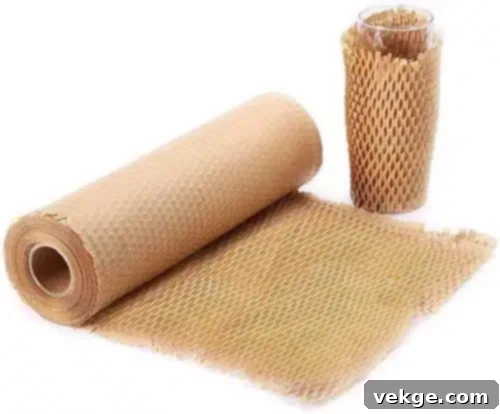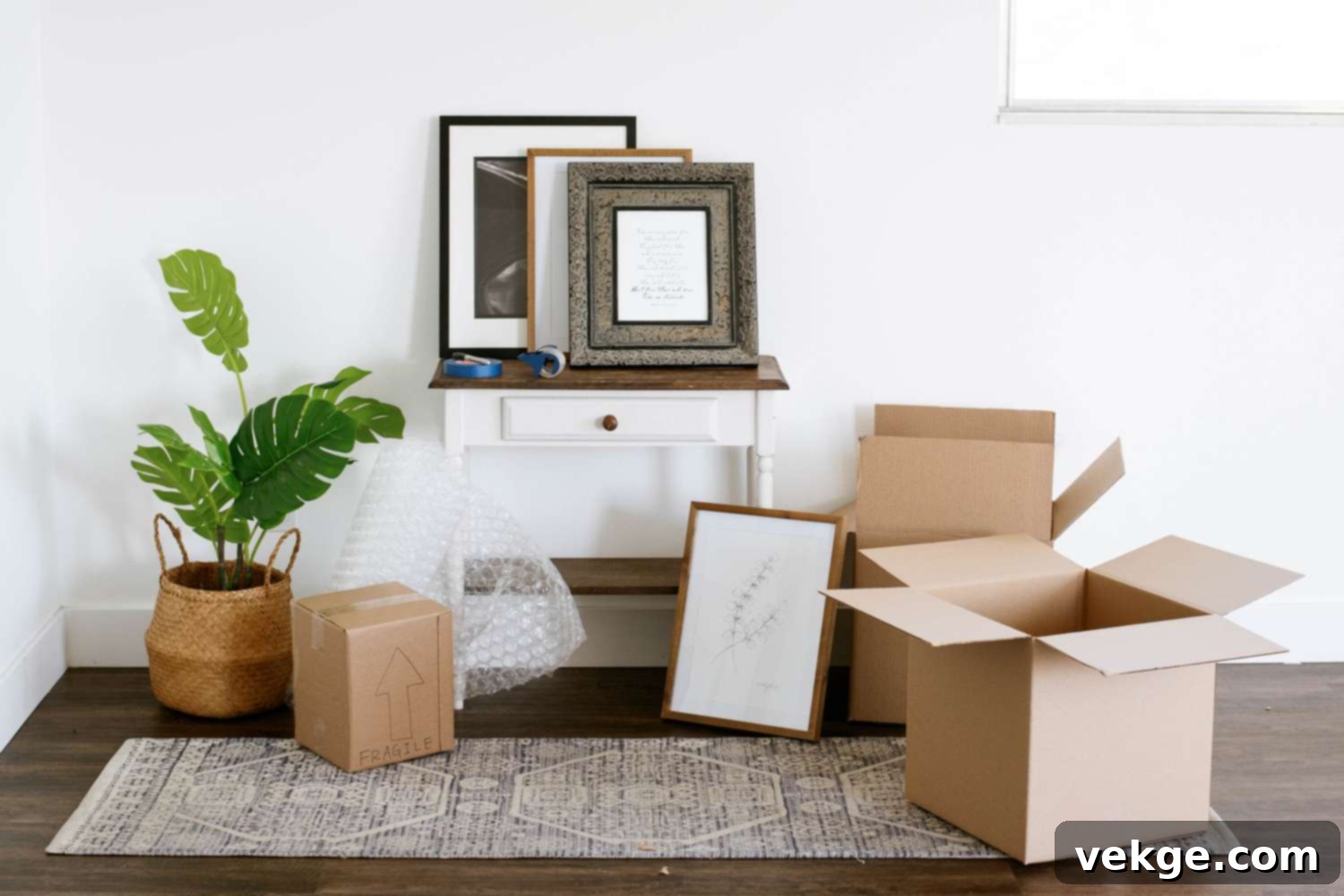Mastering the Art of Moving: Your Ultimate Guide to Packing Artwork Safely
Have you ever paused to wonder about the intricate logistics behind transporting priceless masterpieces like Leonardo da Vinci’s Mona Lisa or Vincent van Gogh’s The Starry Night? While it might seem straightforward to envision moving a collection of art, the reality involves an extraordinary level of precision, care, and expertise, especially when dealing with highly valued or fragile pieces. In fact, artworks are often at their most vulnerable during transit, and any mishandling by an inexperienced mover can lead to irreversible damage.
Whether you’re a passionate artist looking to move your creations to a new studio, or a dedicated collector relocating cherished pieces, understanding the proper techniques for packing artwork for moving from one location to another is paramount. This knowledge is essential for ensuring that your paintings, sculptures, and frames remain in pristine condition, safeguarding their aesthetic and monetary value.
For individuals venturing into the world of DIY art moving, this comprehensive guide will break down everything you need to know. We’ll cover the essential supplies, step-by-step instructions on how to pack, wrap, and cushion your artwork, and offer crucial tips to ensure its safe and effortless transportation. Let’s delve into the best practices that even professional fine art movers meticulously follow.
Assess Your Artwork: The First Crucial Step
Before you even think about purchasing packing supplies, the foundational step in any successful art move is a thorough assessment of your artwork. Gaining complete knowledge of each piece you intend to move will dictate the appropriate packing strategy and materials needed to protect it.
Different types of artworks – particularly paintings, which are our focus here – demand specific handling protocols based on their medium, inherent fragility, dimensions, age, and overall condition. This is where the expertise of a professional moving company often shines, offering unparalleled safety and handling. However, for those opting for a DIY approach, meticulous observation is key. Here are several critical factors to consider during your assessment:
- Painting Type: Confirm the specific medium used for the artwork. Is it oil, acrylic, watercolor, a print, or a mixed media piece? Each medium has unique properties; for instance, oil paintings require ventilation, while certain acrylics can react poorly with standard plastic wraps.
- Material & Support: Identify the material on which the artwork was created. Is it on canvas, wood panel, paper, metal, or another substrate? This affects how it responds to environmental changes and physical stress.
- Glass Facing & Frame Fragility: Check if the painting is protected by a glass face. Glass adds weight and a significant breakage risk. Also, evaluate the fragility and structural integrity of the frame holding the artwork. Ornate or antique frames can be exceptionally delicate.
- Size and Dimensions: Measure the artwork accurately. Larger pieces are inherently more challenging to pack, maneuver, and transport, often requiring specialized equipment or custom solutions.
- Age and Condition: Older paintings, especially antiques or vintage pieces, are often more susceptible to damage due to the aging of materials. They may have brittle frames, delicate pigments, or unstable canvases, demanding extra layers of care.
- Transportation Distance: Consider the total distance the artwork will travel. Longer distances and more complex routes typically necessitate more robust and durable packaging to withstand extended periods of movement and potential vibrations.
- Environmental Conditions: Research the expected temperature and humidity levels along the transport route and at the destination. Significant fluctuations in humidity and temperature can cause expansion, contraction, cracking, or warping in paintings, especially those on wood panels or canvas. Climate-controlled transport might be essential for sensitive pieces.
By carefully evaluating each of these points, you can make informed decisions about the level of protection required for each individual piece, significantly reducing the risk of damage.
Gathering Essential Supplies for Art Packing
Your artworks are valuable possessions, both sentimentally and often financially. Therefore, investing in the right packing supplies is not just an option but a necessity. Having the proper tools and materials readily available will transform the daunting task of packing paintings for moving into a much smoother and safer process. Here’s a comprehensive list of what you’ll need to keep your cherished artworks protected during transit:
- Art and Picture Boxes (Various Sizes): Specifically designed boxes for artwork, often telescoping or adjustable, that provide a snug fit. Have a range of sizes to accommodate different pieces.
- Masking Tape or Painter’s Tape: Essential for securing glass (as we’ll discuss later) and for temporary sealing without leaving residue.
- High-Quality Packing Tape: Strong adhesive tape for securely sealing boxes and wrapping materials.
- Wrapping Materials:
- Brown Packing Paper / Kraft Paper: A versatile, cost-effective layer for cushioning and preventing surface scratches.
- Bubble Wrap: Indispensable for shock absorption. Choose sizes appropriate for the artwork – larger bubbles for larger gaps, smaller for tighter cushioning. Ensure the bubbles face outwards when wrapping paintings.
- Acid-Free Paper / Parchment Paper: Crucial for protecting the surface of sensitive paintings (like acrylics or pastels) from direct contact with plastic wraps, preventing chemical reactions or adherence.
- Cardboard Sheets / Corner Protectors: To reinforce box integrity, provide rigid support, and, specifically, protect vulnerable frame corners.
- Markers (Permanent): For clear labeling of boxes, indicating contents, fragility, and orientation.
- Custom Crates (for oversized or extremely valuable art): While a larger investment, custom wooden crates offer the highest level of protection for very large, heavy, or irreplaceable artworks, often used by professional art handlers.
- “Fragile” and “This Side Up” Stickers (Optional but Recommended): Highly visible indicators that alert movers and handlers to the delicate nature of the contents and the correct orientation.
- Soft Cloths or Foam Sheets: Additional cushioning for extra fragile areas or to fill small gaps within boxes.
- Gloves (Cotton or Nitrile): To prevent fingerprints, oils, and dirt from transferring onto delicate surfaces, especially for unframed pieces or when handling the art directly.
Gathering these supplies beforehand will save you time and provide peace of mind, knowing you have everything necessary to protect your art investment.
How to Pack Artwork for Moving: Step-by-Step Guide

It’s time to meticulously prepare your precious artwork for its journey. Let’s walk through a detailed, step-by-step guide on how to pack artwork with the precision and care of professional fine art movers.
Step #1: Select the Right-Sized Boxes or Crates
When preparing paintings for transport, enclosing them in sturdy carton boxes or custom crates is a fundamental safety measure. The most critical aspect here is ensuring the artwork fits perfectly within its chosen container. This is a common area where mistakes can happen, leading to damage.
- Avoid Overly Large Boxes: If a box is too big, the artwork will have excessive space to shift and wiggle during transit. This uncontrolled movement can lead to the piece banging against the box walls, resulting in dents, scratches, or even punctures.
- Avoid Under-Sized Boxes: Conversely, forcing an artwork into a box that is too small can cause immediate damage from compression, bending, or scraping against the edges of the box as it’s sealed.
- Ideal Fit: The ideal box provides just enough clearance for adequate cushioning material around the artwork, keeping it snug and preventing internal movement without exerting pressure.
- Multiple Pieces: If you’re moving more than one piece, resist the urge to cram them together. Obtain multiple boxes, especially for artworks of varying sizes. While similarly sized pieces can sometimes be merged into a single, larger box with proper internal separators and ample cushioning, it’s generally safer to pack individual pieces or combine only small, robust items if absolutely necessary. Never pack artworks face-to-face or back-to-back without a rigid, protective barrier in between.
Step #2: Apply an “X” Mark to Glass-Fronted Artwork

This step is absolutely critical for any artwork encased behind glass. Using masking tape or painter’s tape (which is less adhesive and less likely to leave residue), create a large “X” shape across the entire glass face. Begin by taping from one corner of the glass diagonally to the opposite corner. Then, repeat this process for the other two corners, ensuring the tape forms a robust “X” that covers as much of the glass surface as possible. This isn’t just an old trick; it’s a scientifically sound method:
- Containment: Should the glass unfortunately shatter during transit due to impact or vibration, the tape helps to hold the glass shards together, preventing them from scattering and potentially slicing through the artwork or its frame.
- Reduced Internal Damage: By keeping the shattered glass fragments largely in place, it significantly reduces the risk of sharp pieces directly damaging the delicate painting or print underneath.
- Added Structural Integrity: While not a primary function, the tape also adds a minor layer of surface tension, which can offer a tiny bit more resistance to initial impacts.
Always use low-adhesive tape to avoid sticky residue or damage to the frame finish. Test a small, inconspicuous area first if you are concerned.
Step #3: Protect the Artwork’s Surface
Once any glass is secured, the next layer of protection focuses directly on the artwork’s surface. This step varies depending on whether your painting has a glass front or is directly exposed.
- For Artwork *Without* a Glass Face: If the painting itself is exposed (e.g., an unframed canvas), cover the direct painting with a layer of appropriate protective material. For most oil or print surfaces, a layer of plastic wrap can offer protection against dust, moisture, and minor abrasions. However, exercise caution with certain mediums.
- Special Consideration for Acrylic Paintings: Acrylic paintings are particularly susceptible to issues if directly covered with regular plastic wrap. The plasticizers in standard plastic wrap can react with the acrylic paint, potentially causing the paint to stick to the plastic or become damaged. For acrylics, pastels, charcoal drawings, or any sensitive, non-varnished surface, it is imperative to use a non-reactive barrier. Acid-free paper, brown kraft paper, or parchment paper should be used as the first layer directly against the painted surface. This creates a safe, breathable barrier before any plastic wrapping is applied.
Always prioritize protecting the integrity of the paint surface itself from direct contact with potentially harmful materials.
Step #4: Cushion and Protect the Frame Edges
Assuming your paintings are housed within frames, the edges and corners are surprisingly vulnerable points that often bear the brunt of impacts during handling and transit. Knowing how to pack framed art for moving correctly involves providing robust cushioning for these areas to prevent chips, dents, and structural damage.
Utilize specialized cardboard corner protectors. These pieces are designed to fit snugly over each of the four corners of the frame, providing a substantial buffer against knocks and drops. If you don’t have commercial corner protectors, you can create your own using multiple layers of corrugated cardboard folded and taped securely around each corner. This extra layer of safety is crucial because even minor impacts to a frame can compromise its aesthetics and structural integrity, or worse, transfer shock to the artwork itself.
Step #5: Apply Cushioning with Bubble Wrap and Paper Wrap

After the initial layers of protection for the glass face, frame corners, and the painting’s surface, it’s time to provide comprehensive cushioning using brown paper and bubble wrap. This is how to wrap pictures for moving effectively:
- First Layer – Brown Paper: Lay a large sheet of brown packing paper flat on a clean surface. Ensure the paper is at least twice the area size of your painting, allowing for ample overlap. Carefully place the artwork (glass or painting side down, depending on your preference and the artwork’s sensitivity) onto the center of the paper. Wrap all the ends of the paper around the artwork, much like you would wrap a gift. Secure the paper with masking tape if necessary to keep it snug. This layer provides a good protective barrier against minor scratches and dust.
- Second Layer – Bubble Wrap: Repeat the wrapping process with bubble wrap. Lay out a sheet of bubble wrap that is large enough to generously cover the entire artwork. Crucially, ensure the bubble side of the wrap faces outwards, away from the artwork’s surface. The air pockets are designed to absorb shock, and placing them outwards maximizes their cushioning potential. Wrap the artwork entirely, making sure there are at least two to three layers of bubble wrap coverage for optimal protection.
- Secure with Packing Tape: Once the bubble wrap is in place, use strong packing tape to secure it. Wrap the tape lengthwise and widthwise around the entire bundle, ensuring the bubble wrap layers are held firmly and stably in place. Do not skimp on tape; a well-taped package is a secure package. This keeps the wrapping from unraveling and provides structural stability during transit.
For exceptionally fragile or valuable pieces, consider adding an additional layer of rigid cardboard to create a “sandwich” around the bubble-wrapped artwork before placing it into the final box. This offers an extra defense against punctures or bending.
Step #6: Check for Movement and Seal the Box
With all the careful packaging and cushioning completed, the penultimate step is to ensure the artwork is securely immobilized within its chosen box. This prevents damaging shifts during transportation.
Gently place the fully wrapped artwork into the box. Ideally, artworks should be transported vertically, in a standing position, to distribute weight evenly and minimize stress on the frame. Once the artwork is inside, close the lid of the box without sealing it yet. Then, gently tilt and shake the box a little. Listen carefully and feel for any significant shifting or “wiggle room” inside.
- If Movement is Detected: If you notice the artwork moving around excessively, it indicates insufficient cushioning. Open the box and add more cushioning materials. Utilize crumpled brown paper, additional sheets of bubble wrap, foam peanuts, or even soft cloths to fill any remaining voids around the artwork. The goal is to create a snug fit where the artwork cannot slide or knock against the box walls.
- Once Stable: When the artwork feels stable and secure, with no noticeable movement, you can proceed to seal the box. Use strong packing tape to securely seal all seams and flaps of the box, ensuring it’s completely closed and protected from dust and moisture.
Step #7: Clearly Indicate Box Contents and Fragility
This final step in the packing process is vital for ensuring your artwork is handled with the appropriate level of care by anyone who moves it. Using your permanent markers, clearly label the outside of the box.
- Content Description: You can explicitly write down the contents, for example, “Artwork: Landscape Painting” or “Framed Print.” This helps you organize and unpack later.
- Fragility Warning: If you prefer to keep the specific content hidden, or even if you reveal it, boldly write “FRAGILE” on multiple sides of the box. This immediately signals to movers that the contents are delicate and require careful handling.
- Orientation: Use arrows and the words “THIS SIDE UP” to clearly indicate the correct upright orientation of the box, preventing it from being stored upside down or on its side, which could stress the artwork.
- Stickers: If you have pre-printed “Fragile” or “This Side Up” stickers, liberally apply them to the outside of the boxes. These highly visible indicators are often more effective than handwritten notes alone. A combination of both stickers and clear, bold handwriting offers the best results.
Clear and consistent labeling ensures that every person who interacts with your package understands its sensitive nature, significantly contributing to the safe transit of your valuable art.
Tips for Handling Special Cases: Oversized, Delicate, or High-Value Artworks

While the general steps above cover most artworks, certain pieces demand an elevated level of consideration and specialized handling. Oversized, exceptionally delicate, or high-value artworks require additional precautions to ensure their safe journey. Here are some essential tips for these special cases:
- Invest in Custom Crating for Larger Artworks: For very large, heavy, or irregularly shaped pieces that cannot be accommodated by standard art boxes, a custom-built wooden crate is often the only safe solution. These crates are constructed precisely to the artwork’s dimensions, providing unparalleled rigidity and protection against impact and pressure. They can also incorporate internal bracing and custom foam inserts for optimal cushioning.
- Opt for Climate-Controlled Transport: Artworks sensitive to environmental fluctuations (e.g., oil paintings, antique wood panels, works on paper) require a stable environment. Extreme changes in temperature and humidity can cause materials to expand, contract, warp, or crack. Climate-controlled transport vehicles maintain a consistent temperature and humidity level, safeguarding the artwork’s integrity regardless of external weather conditions.
- Avoid Stacking Multiple Large Frames: While tempting to save space, stacking large, framed artworks together, even with cushioning, can lead to significant damage. The weight and pressure from above can crush delicate frames, shatter glass, or transfer stress to the artwork itself. Always transport large pieces individually, ideally standing upright and properly secured to prevent tipping.
- Request Extra Hands or Forklifts for Heavy Artworks: Do not attempt to move heavy or oversized artworks alone. Not only is this a safety risk for yourself, but it significantly increases the chance of dropping or damaging the piece. Arrange for sufficient manpower or specialized equipment like dollies, furniture straps, or even forklifts (in a professional setting) to move heavy artworks safely and securely.
- Secure Comprehensive Insurance Coverage: For all valuable artworks, but especially for high-value pieces, robust insurance coverage is non-negotiable. Standard moving insurance often has limitations on high-value items. Invest in specialized fine art insurance that covers damage or loss during transit. Document the condition of each piece with photographs and detailed descriptions before it is moved.
- Seriously Consider Hiring Professional Art Movers: For truly irreplaceable, extremely fragile, or highly valuable collections, the best and most secure option is to engage professional fine art movers. These specialists possess the unique expertise, equipment, and insurance to handle every aspect of art relocation, from custom packing and crating to climate-controlled transport and installation. Their experience can often outweigh the cost for peace of mind.
Final Words: The Art of Moving Artworks Safely
Relocating artwork, whether a single cherished painting or an entire collection, is a significant undertaking. The intrinsic and monetary value of these pieces makes their safe transportation an absolute priority. Knowing how to pack artwork for moving correctly is not just a logistical task; it’s an essential skill for preserving your investment and the beauty of your art.
While the honest and often best way to ensure maximum safety for valuable or delicate pieces is to hire professional experts who specialize in fine art handling, it’s reassuring to know that a DIY approach is entirely feasible. However, this is only true if you meticulously follow proven guidelines and dedicate the necessary time and attention to detail.
By diligently assessing each artwork, gathering the appropriate, high-quality supplies, and following the step-by-step packing process outlined in this article, you can expect a secure and well-cushioned transit for your precious pieces. Remember, the goal is to eliminate any potential for movement, protect against impacts, and safeguard against environmental stressors. With careful planning and execution, your artworks can arrive at their new home in the same pristine condition they left.
